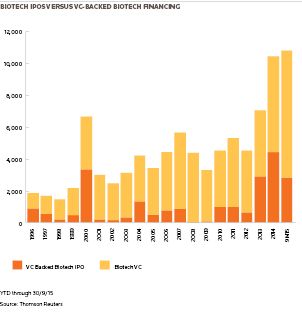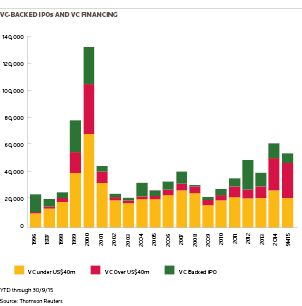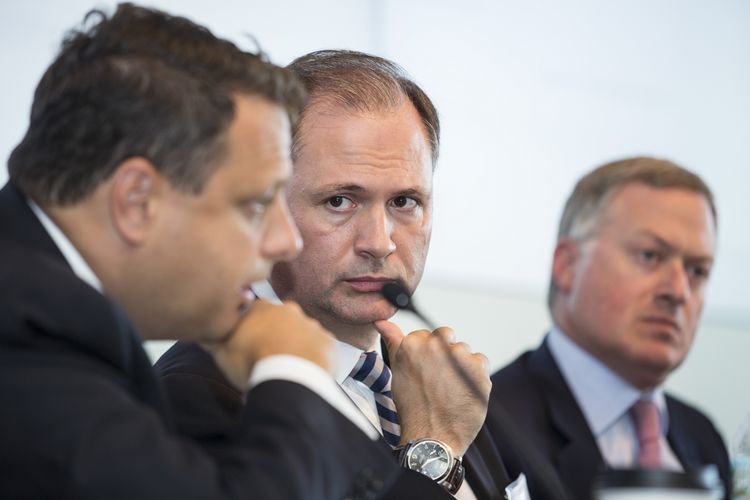IFR: Blocks continue to be a fixture in the US ECM business. Tom, what is your current view on block trading? Obviously Blackstone did sell a large stake in Hilton in May in a deal that provoked a lot of comment in the financial markets in terms of how that was handled.
Tom Morrison, Blackstone: First of all, block trades certainly have increased in terms of frequency. From our perspective blocks enable us to execute a transaction or a monetisation in a very efficient timeframe. We are able to get bids from investment banks after the market close on a given day.
There are two good things about that from our perspective. One is the company stock price is now static and not moving; and two, we know the purchase price at which the investment bank will buy the stock from us.
Block sales afford us an opportunity to have excellent certainty of execution in a transaction versus a marketed follow-on transaction, whereby you’re marketing the company while the market is open and investors ultimately set a price. Also on a marketed follow-on we’re paying a gross spread to the investment banks that impacts the all-in cost of execution.
There are certainly benefits to marketing a follow-on offering. Typically there is an IPO followed by a marketed follow-on or a series of marketed follow-ons. Marketing allows a company to tell their story and continue to build the investor base.
However in today’s world of incredible speed of communication, investors have the ability to get up to speed on companies much faster than they used to way back in the day when a lot of us started in the business. There are non-deal roadshows and industry conferences that enable investors to get up to speed on a company’s story.
We like to look at the opportunities available to us, whether it’s a marketed follow-on or a block trade, and make the best decision at that moment in time looking at the markets and stock price. Then choose the best form of execution going forward, taking all variables into consideration.
Matt Sperling, Rothschild: I would add, and you probably know this better than everyone, blocks are not as simple as they seem. It’s not just call five or 10 banks and you get a bid. There’s a high degree of variability and risk appetite on desks within firms, and appetite can vary at times of the month, at times of year by bank, and depending on which scenario or what else might be going on. Then you need to drill into the specific equities and understand who’s an axe in the stock.
If you can get a correlation between the folks who are the axes in that stock, risk appetite, and hospitable market conditions, you can pull something off that is incredibly beneficial to a seller and works out really well for the buyer. Where you often have examples where it just hasn’t gone well is either: you don’t have the right set of folks; or there isn’t the risk-on mentality or the folks are bidding because they have to want to but they don’t really want to win.
Instead everyone’s grudgingly looking at the bidding opportunity and not liking the risk-reward equation and then trying to figure out how do I come in second place with my bid. That’s not a bidding process you ever want to be in. There’s a careful way to orchestrate all this and hopefully produce a result that’s good for everyone.
Tom Morrison, Blackstone: The increased frequency of block trades coincides with a bull market in equities. You’ve had a series of investment banks who have felt quite constructive on the economic recovery, earnings growth and the trajectory of the stock market. We receive a lot of incoming, unsolicited interest in buying blocks of our stock.
We get quite a bit of market intelligence coming to us and it gives us a good sense of where our stocks trade relative to where deals could price. We’ve taken a look at all the financing or execution opportunities available to us and executed a fair number of block trades.
IFR: Interestingly there have been some blocks this year where the banks were left with stock they were unable to distribute, but yet we still continued to see block trades. Is there a point here at which the banks step back from that business?
Tom Morrison, Blackstone: A lot of the banks like to be involved in the block trade business because they’re working with a corporate client or a sponsor client and they can continue to execute that business. They also feel constructive on the company and can pick up league table credit in these transactions. They also have investors on the other end who are calling them with reverse inquiry on an unsolicited basis and saying they’re interested.
Given the opportunity to pick up a fair amount of league table credit, they may be more inclined to get into the block trade business to execute a transaction by bidding for it and hoping to get it all sold. If they’re left with the slight residual and they are constructive on the market or the company or the stock, and if they’re patient, over time the holding can actually increase in value.
Now that has happened once or twice now, maybe you’re a little more inclined with a little bit of money in your pocket to bid aggressively on the next block and you win that. And maybe they are left with a slight residual position again. Then that goes up in a rising market. So all of a sudden you’ve got a positive amount of dollars in your block trade equity account. So that sort of continues to persist.
Now that’s one person’s perspective sitting on the other side. I don’t know if that’s true today or not, but if you’re in an environment of low VIX and appreciating stock markets that could play out. If you get into more volatile market and falling stock markets, I think you’ll see much fewer block trades happen.
Robert Santangelo, Credit Suisse: We’re active in the block trade market at Credit Suisse. It’s a consistently profitable business for us. We leverage exactly the relationships that Tom was talking about, with corporations and investor dialogue from our trading business. We concentrate mostly in secondary positions we think are generally well anticipated by the market, in a market that’s increasingly sophisticated. Oftentimes the market has already priced in the potential for supply.
IFR: Earlier this year, Credit Suisse completed some pre-open primary blocks for E&P companies, which is an unusual format. Why did the bank and your corporate clients take that approach?
Robert Santangelo, Credit Suisse: As the markets in energy became increasingly volatile, we at Credit Suisse tended to even narrow the execution format further from an overnight format, which is 12 hours, to a two- to three-hour window typically in the pre-market. In the current environment, it is proving to be a very successful strategy to bring companies in and out of the market in a risk-averse way.
Frank Maturo, UBS: Block trades have been one of the big changes in equity capital markets over the last many years. There have been a lot of changes in equity capital markets. We have seen an increased number of book runners on every deal and active versus passive book runners on deals. Capital markets advisory roles have come into play and block trades are much more prevalent. It’s not a bad thing, but it does change the dynamics of your relationship with companies.
In the old days when you did an IPO, it was an annuity. If you did a good job for the company, and hopefully you did, and you priced the deal right and it traded well, you would do multiple follow-on offerings for that company.
In today’s world, a company goes from being an S-1 filer to an S-3 filer after one year. Before, there might have been one follow-on offering, maybe two. Now, once that company becomes an S-3 filer and they don’t need to file a registration statement, block trades are more prevalent. That opens up the spigot for all the banks to get involved with an IPO that occurred a year or 15 months ago.
It’s not a bad thing but it has changed the dynamics.
But certainly there’s different types of block trades. There are 144a block trades that are not registered, which we’re seeing more of. There are negotiated blocks, where you’re just dealing with one firm on the basis of reverse inquiry. Then there are competitive blocks.
On competitive blocks, you have situations where a firm might want league table credit and is more aggressive; or it might be a situation where they have good reverse inquiry so they know where they’re going to place the stock. It’s changed the league tables dramatically.
Again going back to the number of bookrunners, if you’re doing an IPO and you have eight or nine firms, you’re all splitting bookrunner credit from a league table perspective. In contrast, doing one block trade gets you to jump quite substantially up the table.
It’s been very good for the private equity firms, again not in a bad way. They get very quick execution. The information is able to get out into the market place very quickly, but every firm has a different view of the risk that they want to take and when they want to take it. The depth of the block trade market varies during the course of the year depending on whether blocks have been successful or not.
IFR: So maybe eight or nine bookrunners on an IPO but I doubt that the bidding process for a block involves as many as eight or nine banks.
Brett Paschke, William Blair: This whole topic for the most part really only relates to the balance sheet banks. If you’re more of a research-led IPO shop, when you start cutting off the second and third deals and they become block trades that are executed by balance sheet banks that may or may not even cover you on research, that’s frustrating. It’s disruptive to the IPO infrastructure. I can certainly understand the appeal from the seller’s standpoint and it’s virtually impossible for us to sell against that appeal and we get that.
However it does have an impact. Your ability to keep and retain experienced research analysts, pay them a lot, keep them from going to the buyside.
All those things are a challenge already in terms of maintaining quality research. It really gets challenged when there’s one deal, maybe a second, but it’s a lot more difficult to retain coverage in the out years.
If you look at 1996, which was the peak year for IPOs, there were over 700 IPOs that year. There were 148 different investment banks that were a bookrunner on an IPO. Last year there were 24 banks that bookran an IPO. That’s how much consolidation there’s been. Of those 24 about half are the balance sheet banks and about half are more growth-stock oriented or sector-specific banks.
So if you start talking about block trades, you’re really only talking about six or eight firms in a meaningful way participating in that deal. That can really start driving consolidation, which again has other implications as it relates to the economics of being an underwriting firm and providing research and all those sorts of things.
Craig DeDomenico, Stifel: Even in a block trade, that follow-on issuer, including its sponsor owner, should care about where their stock is allocated mostly if it’s not the clean-up trade. If we’re an active bookrunner on the IPO, we’re also making it a priority to be a top trader, including using capital to stay in the flow, to ensure we can provide real time feedback to that issuer on follow-on demand when the time comes to monetise. If we trade the name well we can be as sharp as anyone on where an efficient bid for the stock brings quality buyers but that doesn’t always win the day in competitive block trades
For example, in August we executed via KBW a block for Talmer Bancorp. It was a company whose IPO we had left book run. There were reasons why their sponsor wanted to move forward even in a tough market. They put the block out for bid. We traded about a third of the daily market in that stock. As a result, even in those conditions, we were comfortable bidding that risk at a very tight spread in competition and won it.
It’s not just linked to balance sheet. It’s really linked to where we are in the stock. We’re not going to just lead with our chin by using balance sheet. That’s just not what we’re going to do. We’re not going to make a lot of progress doing that.
We have yet to win left books on any of Tom’s IPOs. We look forward to being left books and getting an opportunity to do a big block on the Stifel platform for Blackstone.
We obviously are very focused on helping our clients mitigate market risk.
We may not choose to offer a risk solution, but we are absolutely confidentially marketing a lot
of these transactions. There are many situations where it makes more sense to target investors under non-disclosure agreement (NDA) that enables them time to do work prior to public flip and still achieve a more certain price in a non-risk execution path. Confidentially marketed follow-ons have been more than 10% of follow-on volume this year.
If in the fourth quarter the VIX doesn’t drop below 20, we’re all going to be very focused on minimising risk. Issuers are going to be hesitant to go out and market for three or four days.
If in the fourth quarter the VIX doesn’t drop below 20, we’re all going to be very focused on minimising risk. Issuers are going to be hesitant to go out and market for three or four days.
IFR: We’ll take some questions from the audience.
Audience member: Can the panel give some thoughts on the outlook for SPAC offerings?
Tom Morrison, Blackstone: We spend a lot of time looking at SPACs and permanent capital vehicles. They can be a nice way to raise permanent capital for platform businesses by taking on different capital structures and acquisition platforms etcetera.
One of the things we think about is what other forms of capital do we have to pursue investment strategies that either are presented to us or that we have available to us, such as in the private equity business, we have a global fund, an energy fund and a tactical opportunities fund. We have teams that are focused on investing in these strategies.
We haven’t taken a decision to raise a SPAC. That doesn’t mean some day we won’t. We take a look at them and whenever they get executed, we spend a lot of time talking to the investment banks and the investors who have participated in them. So we’re at the cutting edge of the technology and know what’s going on. We haven’t done anything yet and we’ll see where we go in the future.
Craig Dedomenico, Stifel: Do you think Blackstone would sell one of their assets to a SPAC as a way to get the asset public?
Tom Morrison, Blackstone: Listen, I think we certainly would, if we’re looking at monetisation. We could potentially dual track an asset, look at what the IPO market could bear for one of our companies or what we could sell it for either to strategic buyers or another financial sponsor.
There may be a situation at some point where a SPAC comes along and may be a competitive purchaser. I haven’t seen that yet. I’m trying to wrack my brain. It hasn’t happened yet. Some of our companies are fairly large and the SPACs aren’t as large, though they certainly could raise incremental capital at the time of execution.
Sometimes if you have the certainty of a purchase price from a strategic investor or a sponsor, the SPAC comes with potentially a small amount of acquisition risk. I wouldn’t say we would be closed to considering it. It might be the right situation at a given point in time.
Audience member: After Alibaba’s IPO last year, what’s the panel’s view on the outlook for cross-border listings and the number of Chinese companies that might come to the US?
Matt Sperling, Rothschild: We’ve seen cross-border deals as a trend only accelerate over the last couple of years. There’s definitely a view which probably has a fair degree of truth to it that in the United States there is a much more developed ecosystem as it relates to a broad range of sectors, with perhaps healthcare being the best example of it. If you are a very promising company, particularly a high growth company, in whatever region, there is potentially a much greater depth in the US market and greater potential in terms of valuation and then ultimately in the aftermarket in terms of trading liquidity and research coverage here in the US.
We’ve seen that definitely play out in healthcare. Over the last couple of years, we have also seen European companies increasingly come to the US. Maybe that has moderated a little bit as the European market has got very proactive and receptive to companies in their home markets.
China is an interesting case theses days. Obviously the country has gone through a lot of different phases. What’s going on in China now is having broad impact on what’s going on in the markets as a whole. Certainly, it is one factor contributing to the recent market volatility.
We have seen very high quality Chinese companies come to the US markets over the past few years coupled with a broad range of lesser quality companies. I don’t think that’s any different than historically.
For a brief period of time when the Chinese market was certainly well ahead of itself, you actually saw a trend develop of some of the US-listed Chinese companies being taken private. Many are in the middle of that process right now.
It will be interesting to see if those take-private situations ultimately get completed and whether they eventually will get public again in the Chinese market. No one really knows exactly when the Chinese IPO market will re-open.
For a high, high quality company, like an Alibaba, there should be receptivity in the US markets. Probably issuers like that are evaluating today whether or not the Chinese markets are what they thought they were. Everyone at this point is trying to figure out where the bottom is.
Tom Morrison, Blackstone: I won’t comment directly on Alibaba, but with respect to emerging markets two things have made it tough. One is that a lot of them are resource-based economies. The decline in oil and gas prices has directly impacted their economies. Secondly, their currencies have had challenges given the China devaluation and other volatility and dislocation we’ve seen in currency markets. That’s just made it tough on emerging market countries and companies. Who knows that might create investment opportunities for us.
Audience member: How is the rise of shareholder activism impacting the market?
Brett Paschke, William Blair: We’ve seen an increasing number of “short reports” come out around recent IPOs. As soon as the stock goes up there’s a short report.
The practice is incredibly unregulated. They’re funded by short investors. There’s not a lot of means of fighting the information. The information is typically quite shoddy and it’s a lot of unrelated points thrown against the wall.
Short reports have real impact. You often see 15%–20% declines in stocks when these things comes out and then the company gets distracted for the next month trying to figure out how to address it. Do we go on the road and do roadshows etcetera?
In a lot of the shops that produce short reports it’s literally one person sitting at a desk. And in some cases a very inexperienced person. I’m hopeful that, because it has had some real impact here, it’s an area that gets addressed because it’s a challenge.
Audience member: With technological developments and the like, do you envision the possibility that IPO roadshows could be compressed in the future?
Jim Cooney, BAML: We have spent a lot of time thinking about that concept in healthcare. I’ve been advocating that the traditional eight- to 10-day roadshow could become four. There’s a lot of risk there, but if you think about these crossover rounds and look at the depth and breadth of the quality of the investors in the crossover round it’s possible to shorten the roadshow. If you take a snapshot of who bought the last private round, fast forward it to the public round, that’s a fantastic pot list. Often the crossover round protocol etiquette is you buy the crossover round and then you show up with a cheque again to buy the IPO.
Most of these deals are very well subscribed and there are clearly IPOs that we’ve worked on in the healthcare space that could have launched on Monday morning and priced on Thursday night. Without question. We haven’t seen anyone want to do that yet.
I don’t think the eight- to 10-day roadshow goes away, but as we think about the evolution of capital markets, I definitely think you’re going to see in-and-out type IPO executions, particularly if volatility lives above 25.
Matt Sperling, Rothschild: Then again, we’re talking about one of the few instances an issuer will be able to have the attention of the crème de la crème of the investment community. Who are you as a management team? What is your story? And what are you long term prospects?
Ultimately, as we talked about, there is art to the science of marketing an IPO. Are you anchoring a deal around a smaller group of investors or allocating to a broader group. Can you accomplish everything in four days, six days, or eight days? Maybe.
But, importantly, when a company comes back to do their first follow-on offering, they are going to go back to those investors that bought on the IPO. They’re going to pull out the exact same legal pad, or whatever, from the IPO, flip to page 27 and start quizzing. Hopefully management will be able to communicate that they delivered on exactly what was promised.
Also you are hoping to attract new investors in the follow-on, some of which may have elected not to participate on the IPO for whatever reasons. You want to be able to point to that track and tell them, ‘hey, we’re only in the first or second inning’.
So there are a bunch of incremental benefits to the length of a roadshow beyond just simply pricing the deal.
Tom Morrison, Blackstone: If you were to ask me when I walked into this room, what would be the one material change that could happen in the capital markets process in the next five or 10 years, the length of IPO roadshows would probably be one.
I haven’t seen anybody have real discussions around this. But given the desire to minimise market risk, it’s not out of the question, particularly given information flow is so great with RoadshowAccess and people able to watch these roadshows online. Some of these companies are exciting, and their IPOs five times oversubscribed on the first day. It’s not out of the question from an efficiency standpoint.
But a big objective of investors is to meet management teams, and that is really hard to replace. That’s one reason why the longer roadshow persists.
Frank Maturo, UBS: It’s definitely going to happen. It’s definitely going to shorten. I mean you have already seen first time follow-ons go from four- or five-day roadshows to now one or two days. Then you would have one- and two-day roadshows flip to overnight block trades.
There’s no reason why IPO roadshows could not be shortened. There are conferences that investors get to see private companies. The JOBS Act introduced “testing of the waters”. A lot of private companies have already marketed their story well ahead of the actual IPO.
There are still a lot of benefits to face-to-face roadshow meetings. I don’t think they’re going to go away but I do think you’re going to see shorter roadshows over time.
I have one addendum to something that was talked about earlier as far as post Labor Day IPOs. I forgot to mention that you might see IPO price ranges that are a little bit wider moving forward. Normally we see US$2 price ranges on IPOs and in some cases you see US$3 price ranges.
In the fall, given increased volatility and how it’s affected valuations and the IPO discount, I think you’re going to see more US$3 ranges and US$4 ranges than we have seen in the past nine months to a year.
IFR: I think we have covered a lot of ground and some new topics here. Thank you everyone for participating.
To see the digital version of this roundtable, please click here
To purchase printed copies or a PDF of this report, please email gloria.balbastro@thomsonreuters.com




